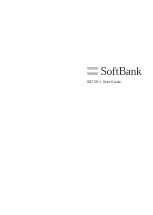
Important Safety Information
(not applicable for Aastra 650c)
Communications Regulation Information
FCC Notices (U.S. Only)
This device complies with part 15 of the FCC
Rules. Operation is subject to the following two
conditions:
(1) This device may not cause harmful interfer-
ence, and (2) this device must accept any interfer-
ence received, including interference that may
cause undesired operation.
Modifications not expressly approved by this
company could void the user's authority to oper-
ate the equipment.
NOTE: This equipment has been tested and found
to comply with the limits for a Class B digital de-
vice, pursuant to Part 15 of the FCC Rules. These
limits are designed to provide reasonable protec-
tion against harmful interference in a residential
installation. This equipment generates, uses and
can radiate radio frequency energy and, if not in-
stalled and used in accordance with the instruc-
tions, may cause harmful interference to radio
communications. However, there is no guarantee
that interference will not occur in a particular in-
stallation. If this equipment does cause harmful
interference to radio or television reception,
which can be determined by turning the equip-
ment off and on, the user is encouraged to try to
correct the interference by one or more of the fol-
lowing measures:
• Reorient or relocate the receiving antenna.
• Increase the separation between the equip-
ment and receiver.
• Connect the equipment into an outlet on a cir-
cuit different from that to which the receiver is
connected.
• Consult the dealer or an experienced radio/TV
technician for help.
Health and Safety Information
Exposure to Radio Frequency (RF) Signals:
The wireless phone is a radio transmitter and re-
ceiver. It is designed and manufactured not to ex-
ceed the emission limits for exposure to radio fre-
quency (RF) energy set by the Federal Communi-
cations Commission (FCC) of the U.S. Govern-
ment. These limits are part of comprehensive
guidelines and establish permitted levels of RF
energy for the general population. The guidelines
are based on the safety standards previously set
by both U.S. and international standards bodies.
These standards include a substantial safety mar-
gin designed to assure the safety of all persons, re-
gardless of age and health.
This device and its antenna must not be co-locat-
ed or operating in conjunction with any other an-
tenna or transmitter.
This EUT has been shown to be capable of compli-
ance for localized specific absorption rate (SAR)
for uncontrolled environment/general population
exposure limits specified in ANSI/IEEE Std.
C95.1-1992 and had been tested in accordance
with the measurement procedures specified in
FCC/OET Bulletin 65 Supplement C (2001) and
IEEE 1528-2003.
Industry Canada (Canada only)
Operation of this device is subject to the following
two conditions: (1) this device may not cause in-
terference, and (2) this device must accept any in-
terference, including interference that may cause
undesired operation of the device.
Privacy of communications may not be ensured
when using this telephone.
Exposure to Radio Frequency (RF) Signals:
The wireless phone is a radio transmitter and re-
ceiver. It is designed and manufactured not to ex-
ceed the emission limit for exposure to radio fre-
quency (RF) energy set by the Ministry of Health
(Canada), Safety Code 6. These limits are part of
comprehensive guidelines and established per-
mitted levels of RF energy for the general popula-
tion. These guidelines are based on the safety
standards previously set by international standard
bodies. These standards include a substantial
safety margin designed to assure the safety of all
persons, regardless of age and health.
This device and its antenna must not be co-locat-
ed or operating in conjunction with any other an-
tenna or transmitter.
This device has been shown to be capable of com-
pliance for localized specific absorption rate
(SAR)for uncontrolled environment / general pub-
lic exposure limits specific in ANSI/IEEE
C95.1-1992 and had been tested in accordance
with the measurement procedures specified in
IEEE 1528-2003.



































